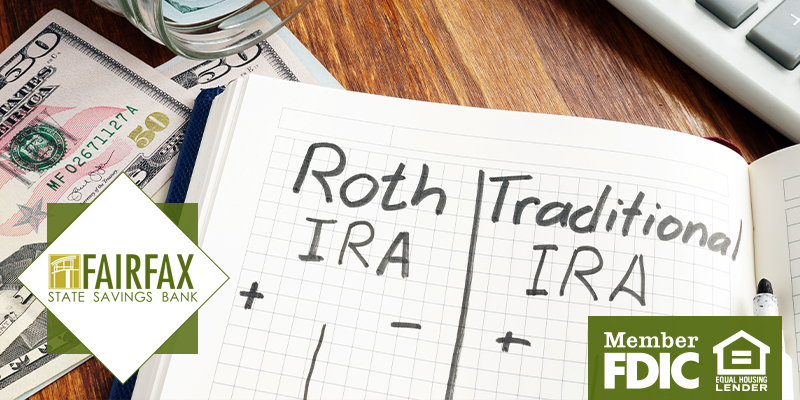Traditional IRAs and Roth IRAs: What’s the Difference?
Posted on | Categories: Financial Education, Personal Finances, Retirement

Both Traditional and Roth IRAs are retirement accounts, each with their own pros and cons. Understanding the differences between them is important when it comes to deciding which one you should open. We’re here to provide you with the facts you need to make an educated decision, so let’s get started!
An IRA is an Individual Retirement Account that allows individuals to save their money and invest tax-deferred.
Roth IRA: You contribute after-tax dollars, which means your money grows tax-free.
Traditional IRA: The contributions to your Traditional IRA come from pre-tax dollars, and this is available for anyone with earned income.
Roth IRA: The contributions to your Roth IRA come from after-tax dollars, and this is available for those with earned income below a certain level.
The max contribution for both Traditional and Roth IRAs for 2021 is $6,000, or $7,000 if you’re over the age of 50.
Traditional IRA: Traditional IRAs allow your contributions to grow tax deferred. Traditional IRAs are tax-deductible if you qualify.
Roth IRA: Roth IRAs allow your contributions to grow tax-free. Roth IRAs are not tax-deductible.
Traditional IRA: Once you turn age 59 ½, you can withdrawal any amount from your IRA without having to pay the 10% penalty.
Roth IRA: You can withdraw contributions you’ve made to your Roth IRA anytime, tax- and penalty-free. However, the penalties still apply if you withdraw earnings in your Roth IRA.
Traditional IRA: This is your best option if you expect to be in the same or lower tax bracket when you start taking withdrawals.
Roth IRA: This is your best option if you expect to be in a higher tax bracket when you start taking withdrawals.
We hope this has helped you become more familiar with IRAs, but if you still have questions, we’re here to provide the answers. Contact us or visit our website to learn more.
